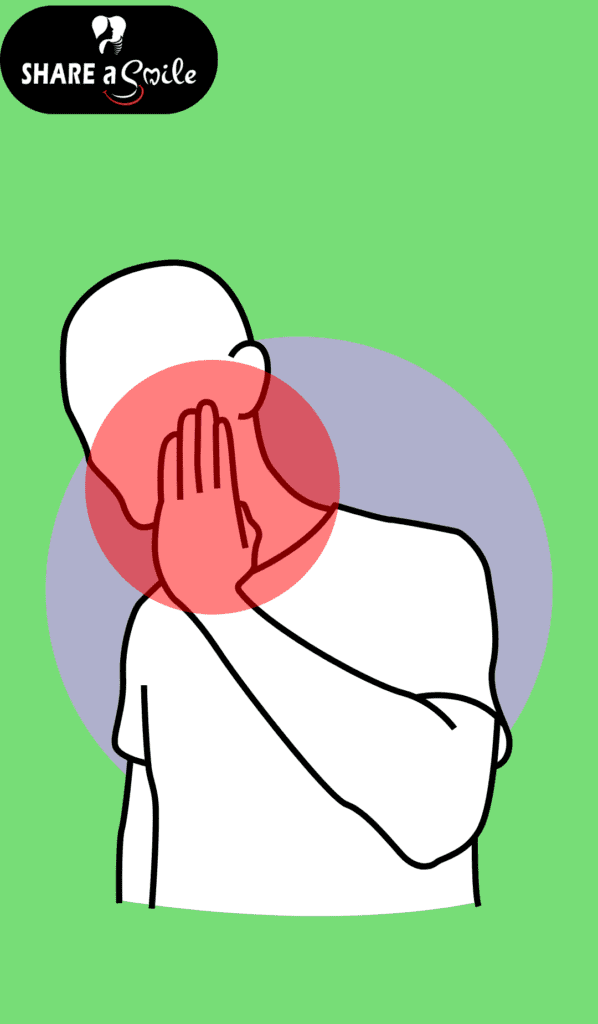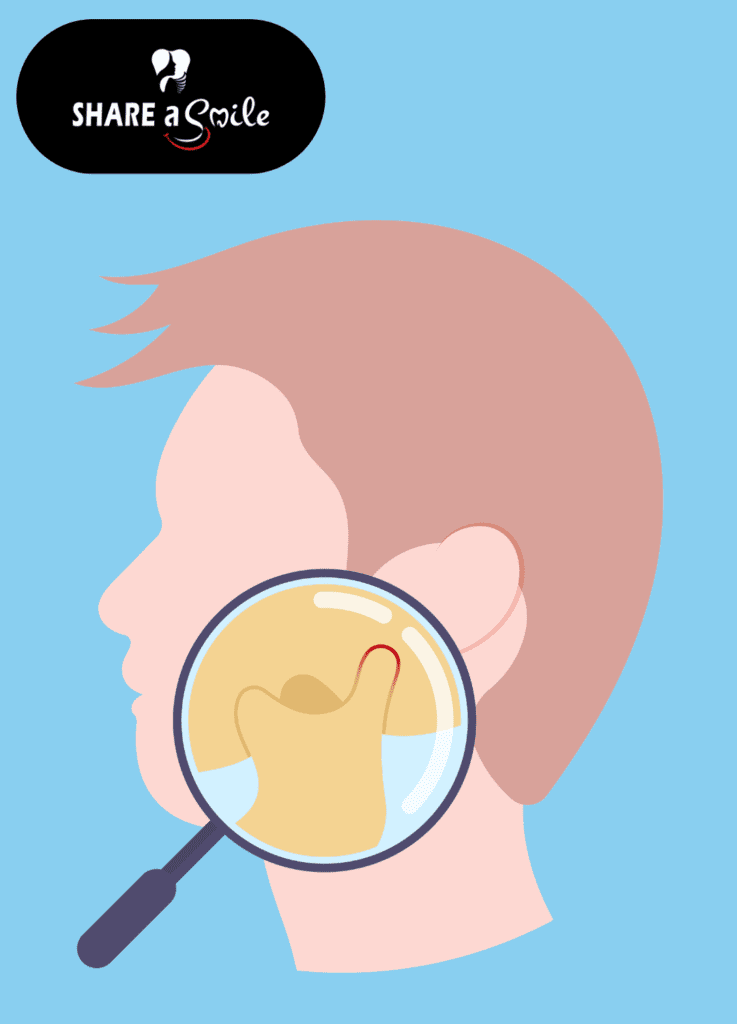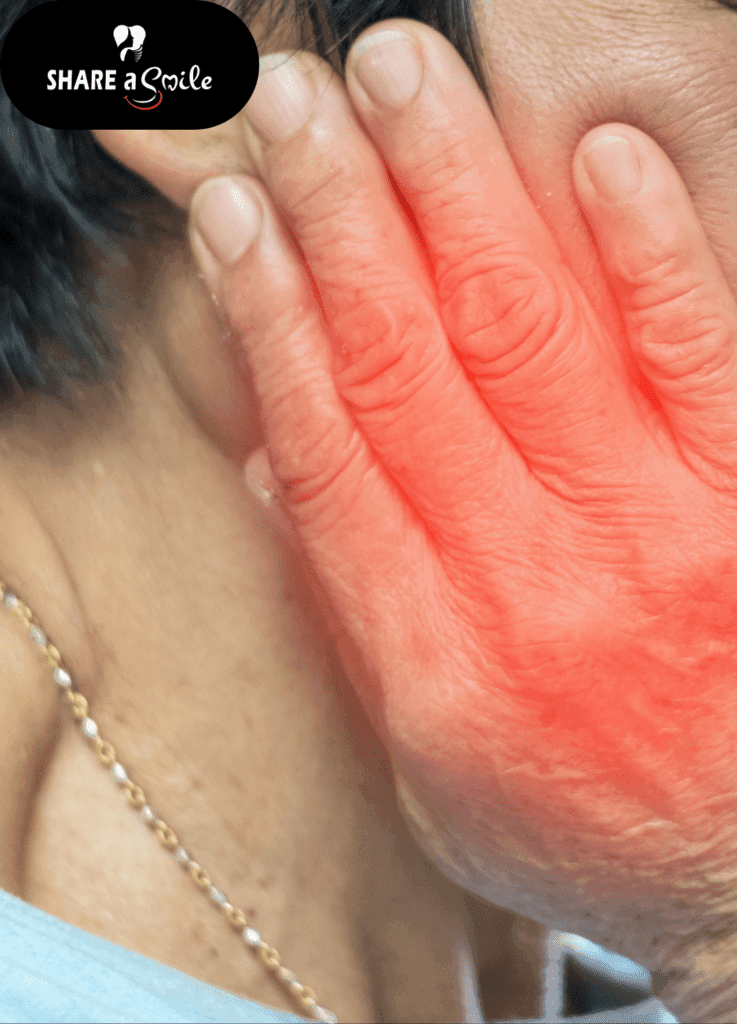Welcome to Share A Smile’s The Ultimate Guide to Understanding and Managing TMJ Disorder! If you or someone you know has been experiencing jaw pain, difficulty chewing, or frequent headaches, then you’re in the right place.
This comprehensive guide explores TMJ disorder, also known as temporomandibular joint disorder, to help you gain a better understanding of its causes, symptoms, Whether you’re a dental professional or someone seeking relief from TMJ-related discomfort, the information in this guide will help you effectively manage this condition.
So, Empower yourself with insights into managing TMJ-related discomfort for a healthier, pain-free lifestyle!!
What is TMJ Disorder?
Temporomandibular Joint Disorder (TMJ Disorder) which affects the jaw joint and surrounding muscles. It is characterized by pain, stiffness, and difficulty in moving the jaw.
It can be caused by several things, such as injury to the jaw joint, teeth grinding or clenching, arthritis, or misalignment of the jaw. As a result, individuals may experience symptoms like facial pain, headache, earache, and clicking or popping sounds in the jaw joint.
It is essential to understand and manage TMJ Disorder effectively to alleviate these discomforts and improve overall oral health.

Causes
Various factors can contribute to the development of this disorder. One common cause is trauma or injury to the jaw joint. It could occur due to accidents or any kind of impact on the face.
Another factor that can worsen this disorder is bruxism, which is the habit of teeth grinding and excessive clenching of the jaw. The continuous strain on the jaw joint can lead to pain and discomfort.
Additionally, misalignment of the teeth and jaws can also play a significant role in the development of this disorder. When the jaws do not align properly, it puts stress on the temporomandibular joint, resulting in discomfort.
Lastly, arthritis in the temporomandibular joint can contribute to TMJ Disorder. Pain and difficulty moving the jaw can be symptoms of inflammation and deterioration of the joint.
Understanding these factors can help in the management of the disorder and prevent further complications.
Symptoms

Common symptoms of this disorder range from person to person but may include jaw pain or tenderness. It may range from mild to severe, and it may worsen with certain activities like chewing or speaking.
Another symptom to watch out for is the locking of the jaw joint, where it becomes difficult to open or close your mouth fully.
Additionally, some individuals may experience headaches, earaches, or even ringing in their ears as symptoms of this disorder.
These symptoms may come and go or persist over time, and it’s important to address them to effectively manage TMJ Disorder.
Diagnosis
To diagnose TMJ disorder, a medical professional will start by conducting a comprehensive physical examination. They will carefully assess the jaw joint and surrounding muscles to identify any signs of inflammation, tenderness, or limited movement.
This examination is crucial in determining the extent and severity of the condition. For a better understanding of the condition of the temporomandibular joint, medical tests such as X-rays or MRI scans may be necessary.
An imaging test can provide detailed images of the jaw joint, allowing the healthcare provider to identify any abnormalities or damage.

Your medical history and symptoms will also play a significant role in the diagnostic process. It is important to provide your healthcare provider with information about any previous injuries or conditions that may have contributed to the development of this disorder.
Moreover, discussing your symptoms in detail can help the medical professional in making an accurate diagnosis. In some cases, a consultation with a dental specialist may be recommended to further evaluate your condition. An expert in TMJ disorders will be able to assess the alignment of your teeth and jaws.
Working together, these medical professionals will gather all the necessary information to diagnose this disorder and develop an appropriate treatment plan.
Dental examinations
Various aspects of your oral health will be assessed during a dental examination for TMJ disorder. They will not only evaluate your bite alignment and tooth wear patterns but also use clinical measurements and imaging techniques to evaluate the position and movement of your jaw joints.
In certain cases, they may even take dental impressions or moulds of your teeth to create custom orthotic devices that can provide symptom relief. This comprehensive approach ensures that we consider and address all potential factors contributing to your TMJ disorder for effective management.
Treating TMJ Disorder
You can effectively manage TMJ disorder through various treatment methods. Self-care techniques play a crucial role in managing this condition, and practising good oral hygiene is one of them. Additionally, professional treatment options are available for those with more severe cases.
Self-care techniques for TMJ Disorder

Several self-care techniques can be highly beneficial in managing this disorder. One effective technique is to apply warm or cold compresses to the jaw area. It can help reduce inflammation and alleviate pain, providing much-needed relief.
Meditation or deep breathing exercises are also helpful relaxation techniques. These techniques can help relax the jaw muscles and reduce stress-related symptoms associated with this disorder.
Additionally, it’s important to be mindful of your diet and avoid foods that are hard to chew or require excessive jaw movement.
It means steering clear of chewing gum or tough meats, as they can aggravate TMJ symptoms. Lastly, maintaining good posture and avoiding clenching or grinding your teeth can contribute to better management of TMJ disorder. By implementing these self-care techniques, individuals can improve the quality of their lives.
Professional Treatment Options for TMJ Disorder
If self-care techniques do not provide sufficient relief, seeking professional treatment options for TMJ disorder may be necessary.
A dentist or oral surgeon can prescribe a splint or mouthguard to relieve TMJ disorder symptoms. These custom-made devices can provide support and prevent clenching or grinding of the teeth, reducing the strain on the jaw joints.
Your healthcare provider may prescribe corticosteroid injections into the temporomandibular joints in some cases to reduce inflammation and relieve pain associated with TMJ disorder. This treatment option can offer more targeted and immediate relief for those experiencing severe discomfort. Injections of this type, however, are typically used as a temporary solution and may need to be repeated periodically.
If other treatments prove ineffective for severe cases of TMJ disorder, the healthcare provider may consider surgery. It could involve procedures such as joint replacement or arthroscopy to repair or replace damaged parts of the jaw joint. Surgery is usually recommended when all other conservative treatments have failed, and the risks outweigh the benefits.
Based on individual needs and circumstances, a healthcare professional should determine the most appropriate treatment approach.
Preventing TMJ Disorder
Keeping your mouth healthy and getting regular dental checkups are key to preventing TMJ disorders. Teeth and gum care can reduce the likelihood of TMJ symptoms.
Tips for Preventing TMJ Disorder
To effectively manage TMJ disorder, there are certain habits to avoid and techniques to implement:

1. It is important to avoid excessive gum chewing, as this can lead to jaw muscle fatigue and strain on the temporomandibular joint.
2. Maintaining proper posture can help relieve unnecessary pressure on the jaw joint while sitting and standing. It is also beneficial to steer clear of habits like nail biting or pen chewing, as these repetitive movements can contribute to TMJ disorder.
3. Applying warm compresses to the jaw relieves pain and relaxes the muscles. These tips can help you manage TMJ disorder effectively and improve your quality of life.
Conclusion
In conclusion, understanding and managing Temporomandibular Joint (TMJ) Disorder is crucial for those experiencing its symptoms. TMJ disorder causes, symptoms, and potential treatments have all been discussed in this comprehensive guide.
Lifestyle adjustments and professional advice can help individuals manage and alleviate TMJ symptoms. A customized approach, with the help of healthcare professionals, can contribute to a more effective and personalized treatment plan.TMJ disorder can be managed and improved with knowledge, awareness, and proactive care.
If you are experiencing any kind of symptoms related to TMJ disorder, Share A Smile is here to help you. Contact Us!
Our Service Locations
Share A Smile Dental Clinic is located in Pandalam, Pathanamthitta, Kerala. We are dedicated to offering quality root canal treatments in Pandalam. Our experienced dentists and staff are committed to providing you with a beautiful smile and healthy teeth. We strive to provide a comfortable and convenient experience.
Book an Appointment
Don’t wait, relieve your pain with our expert dentists at Share A Smile Dental, Pandalam
TMJ Disorder Treatmens in Pandalam| Pathanamthitta| Adoor| Chengannoor| Mavelikkara| Kerala| Share A Smile| Dental Clinic| Pandalam
